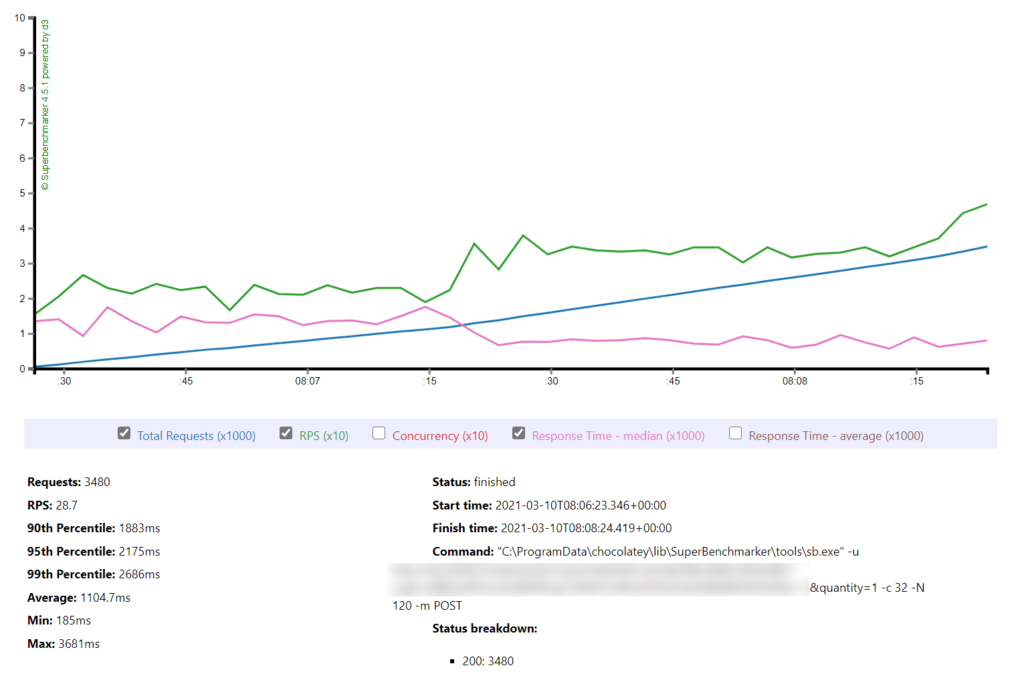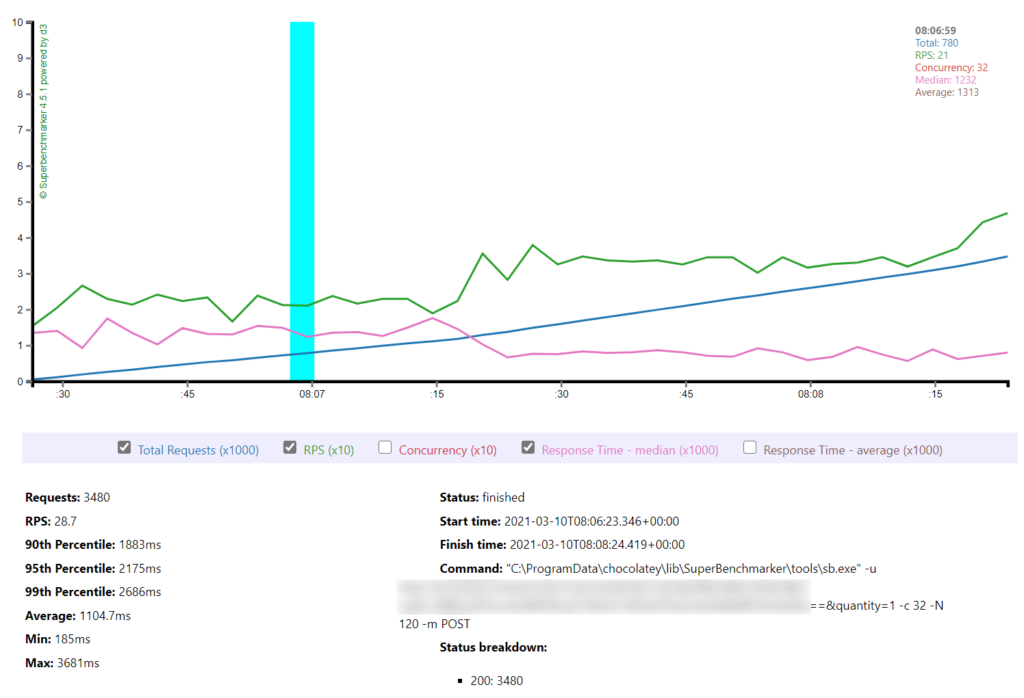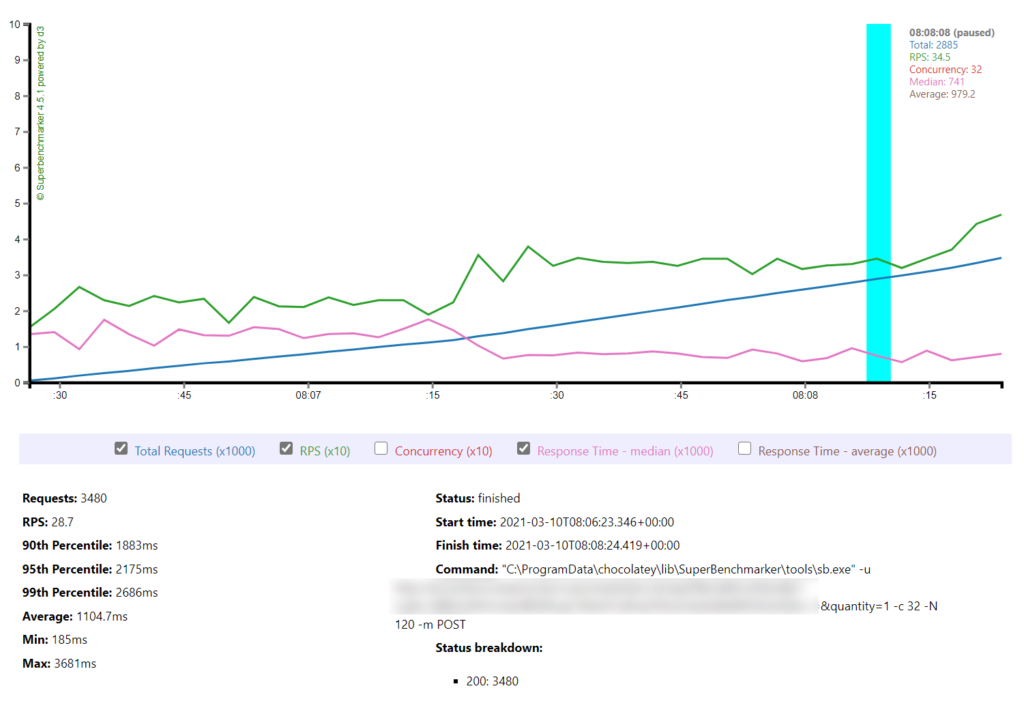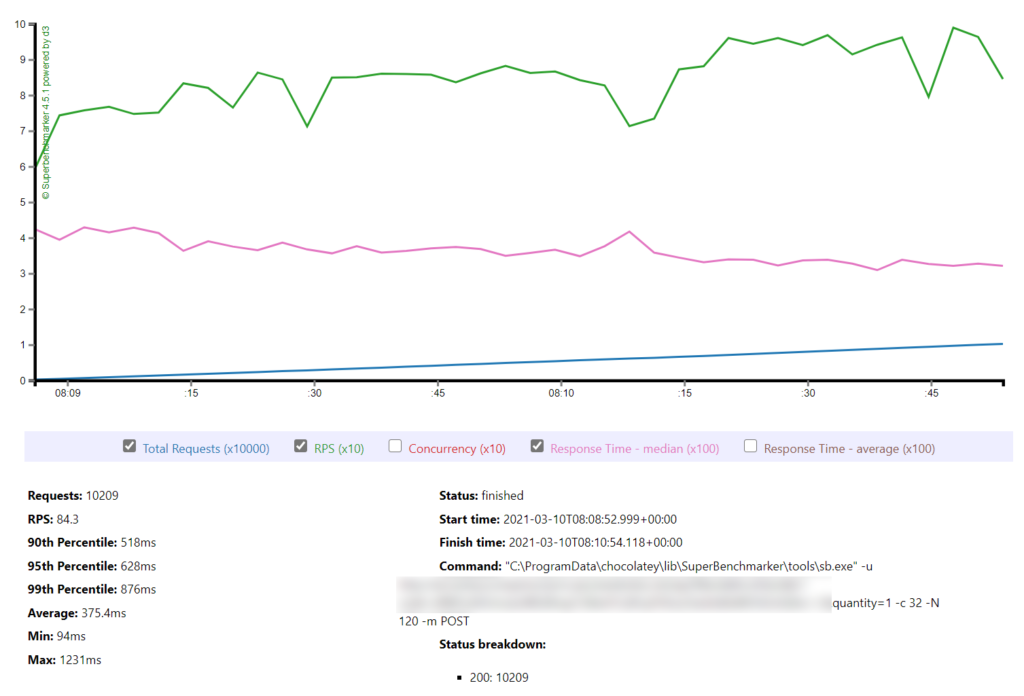In yesterdays post comparing Azure Functions to AWS Lambda the EP1 plan was a notable poor performer - to the extent I wandered if it was an anomalous result. For context here is yesterday’s results for a low load test:
I created a new plan this morning with a view to exploring the results further and I think I can provide some additional insight into this.
You shouldn’t have to “warm” a Premium Plan but to be sure and consistent I ran these tests after allowing for an idle / scale down period and then making a single request for a Mandelbrot.
The data here is based around a test making 32 concurrent requests to the Function App for a single Mandelbrot. Here is the graph for the initial run.
First if we consider the overall statistics for the full run - they are still not great. If I pop those into the comparison chart I used yesterday EP1 is still trailing - the blue column is yesterdays EP1 result and the green line todays.
Its improved - but its still poor. However if we look at the graph of the run over time we can see its something of a graph of two halves and I’ve highlighted two sections of it (with the highlight numbers in the top half):
There is a marked increase in response time and request per second rate between the two halves. Although I’m not tracking the instance IDs I would conclude that Azure Functions scaled up to involve a second App Service Instance and that resulted in the improved throughput.
To verify this I immediately ran the test again to take advantage of the increased resource availability in the Function Plan and that result is shown below along with another comparative graph of the run in context.
We can see here that the EP1 plan is now in the same kind of ballpark as Lambda and the EP2 plan. As two EP1 instances in play we are now running with a similar amount of total compute as the EP1 plan - just on two 210 ACU instances rather than one 420 ACU instance.
To obtain this level of performance we are sacrificing consumption based billing and moving to a baseline cost of £0.17 per hour (£125 per month) bursting to £0.34 per hour (£250 per month) to cover this low level of load.
Conclusions
I would argue this verifies yesterdays results - with a freshly deployed Function App we have obtained similar results and by looking at its behavior over time we can see how Azure Functions is adding resource to an EP1 plan then giving us similar total resource to the EP2 plan and similar results.
Every workload is different and I would always encourage this but based on this I would strongly suggest that if you’re using Premium Plan’s you dive into your workload and seek to understand if it is a cost effective use of your spend.






